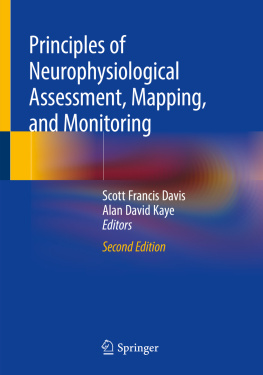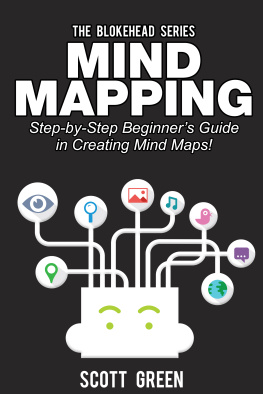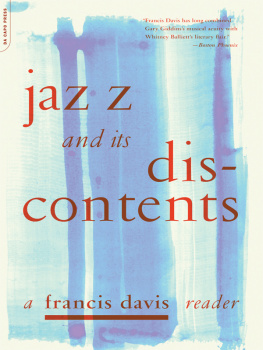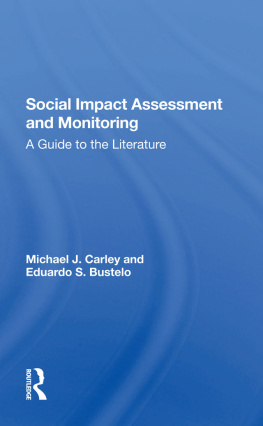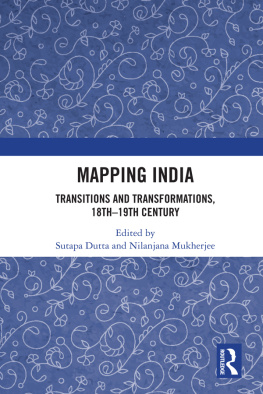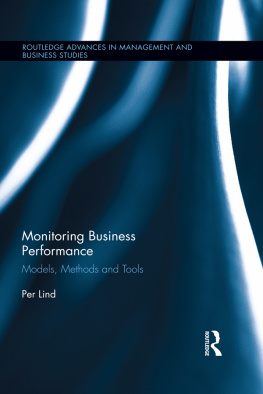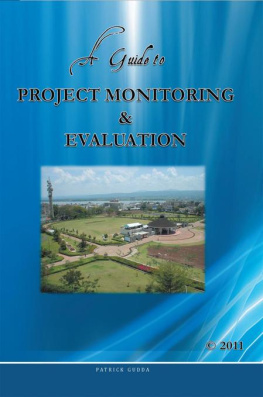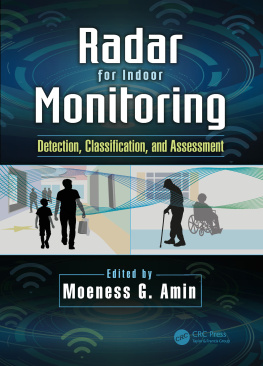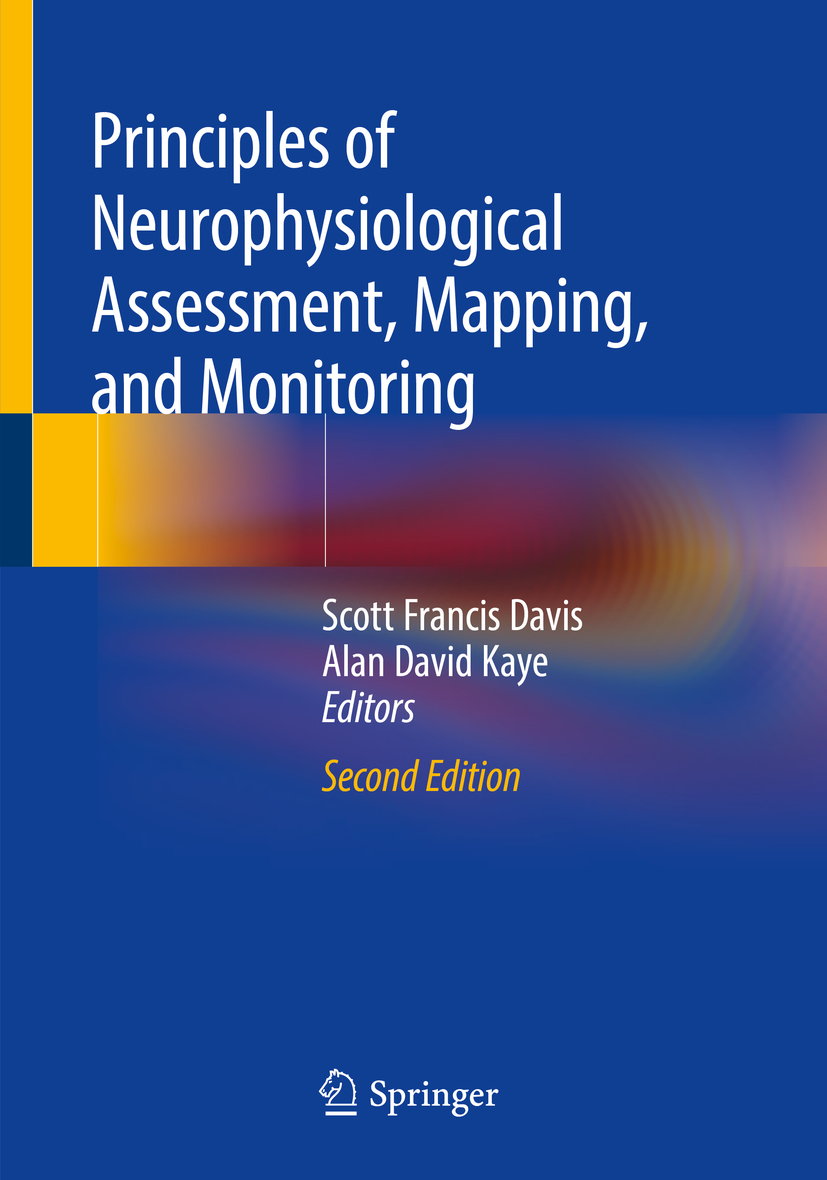Editors
Scott Francis Davis and Alan David Kaye
Principles of Neurophysiological Assessment, Mapping, and Monitoring
2nd ed. 2020
Editors
Scott Francis Davis
Department of Anesthesiology, Louisiana State University School of Medicine, Tulane University School of Medicine, New Orleans, LA, USA
Alan David Kaye
Departments of Anesthesiology and Pharmacology, Toxicology, and Neurosciences, LSU School of Medicine, Shreveport, LA, USA
ISBN 978-3-030-22399-1 e-ISBN 978-3-030-22400-4
https://doi.org/10.1007/978-3-030-22400-4
Springer Nature Switzerland AG 2020
This work is subject to copyright. All rights are reserved by the Publisher, whether the whole or part of the material is concerned, specifically the rights of translation, reprinting, reuse of illustrations, recitation, broadcasting, reproduction on microfilms or in any other physical way, and transmission or information storage and retrieval, electronic adaptation, computer software, or by similar or dissimilar methodology now known or hereafter developed.
The use of general descriptive names, registered names, trademarks, service marks, etc. in this publication does not imply, even in the absence of a specific statement, that such names are exempt from the relevant protective laws and regulations and therefore free for general use.
The publisher, the authors, and the editors are safe to assume that the advice and information in this book are believed to be true and accurate at the date of publication. Neither the publisher nor the authors or the editors give a warranty, expressed or implied, with respect to the material contained herein or for any errors or omissions that may have been made. The publisher remains neutral with regard to jurisdictional claims in published maps and institutional affiliations.
This Springer imprint is published by the registered company Springer Nature Switzerland AG
The registered company address is: Gewerbestrasse 11, 6330 Cham, Switzerland
I would like to thank my colleagues in the field of IOM, whose passion and commitment to patient care have made this work possible. To Dr. Alan David Kaye, who has mentored me as an editor and professor; his wisdom and tireless work ethic are beyond compare. To Nick Luekenga and all of my colleagues at Neuromonitoring Associates, who provide me with support and friendship and who themselves are among the best advocates for patient care in the field.
Most of all, I am grateful to my wife, Robin, and my wonderful kids, Georgia Rose, RJ, Scottie, and Graham. They are Gods most precious gift. Last, but not least, I still dedicate all I do ad majorem Dei gloriam!
Scott Francis Davis
To my wife, Dr. Kim Kaye, and my children, Aaron and Rachel Kaye, for being the best family a man could ask for in his life. To my brother, Dr. Adam Kaye, Pharm D, for being the best budder in the world. To all my teachers and colleagues at the University of Arizona in Tucson, Ochsner Clinic in New Orleans, Massachusetts General Hospital/Harvard School of Medicine in Boston, Tulane University School of Medicine in New Orleans, Texas Tech University Health Sciences Center in Lubbock, and LSU School of Medicine in New Orleans.
Alan David Kaye
Foreword
In the constantly evolving realm of fundamental, translational, and clinical medical sciences, it is imperative that cutting-edge knowledge be synthetized and transmitted clearly and accurately to healthcare providers. This book deals with intraoperative monitoring, a field that has evolved rapidly in the last few decades. Intraoperative neurophysiologic monitoring has become an important area because it provides functional information in real time during surgery, thus benefiting patients and serving as an essential guideline for surgeons in the prevention of neurological damage. Therefore, multidisciplinary knowledge spanning neurophysiology, anesthesiology, neurology, and neurosurgery is enriching this field, owing to the creation of a two-way channel of communication, from the lab bench to the clinic and from the patient to the lab. This includes monitoring of the electrical activity of the nervous system (auditory and somatosensory evoked potentials and EEG).
That is where this book comes in: Principles of Neurophysiological Assessment, Mapping, and Monitoring, Second Edition . Based on their combined knowledge and experience in intraoperative neurophysiologic monitoring and neurophysiology in neurosurgery, Drs. Alan David Kaye and Scott Francis Davis have assembled a textbook that is a well-integrated blend of contemporary fundamental and clinical sciences aimed at clinicians who monitor the function of the nervous system during surgery. Dr. Kaye is an outstanding leader of the academic program in anesthesiology at the Louisiana State University Health Sciences Center (LSUHSC), New Orleans, and Dr. Davis has distinguished himself, due to his talent, drive, and motivation, since he was a graduate student in the LSUHSC Interdisciplinary Graduate Program.
While there are advanced texts leveled at neurophysiologists, surgeons, and residents alike, there are few that expound upon the basics of intraoperative neurophysiologic monitoring in such a way that those just entering the study can understand the underlying principles of this field. At the same time, the way that the materials are presented here also will be very useful to experienced specialists. The contributors to this book provide the brick and mortar that lay the foundations of neurophysiologic monitoring, which will benefit new technologists all the way to neurophysiologists and neurosurgeons. The second edition offers a number of improvements that I know you will enjoy!
Not unlike Wilder Penfield, who pioneered seminal brain mapping studies, this book seeks to provide a comprehensive guide to students just beginning their journey and experts searching for an excellent reference to other aspects of intraoperative neurophysiologic monitoring and neurophysiology in neurosurgery.
Nicolas G. Bazan
C. Ernest Boyd Professor
Yvette C. Villere
Preface
The second edition of Principles of Neurophysiological Assessment, Mapping, and Monitoring is intended to provide a timely update to the first edition text and continue the mission of educating new neurotechnologists, residents, and physicians in the field of intraoperative monitoring. New chapters on pediatric monitoring and spinal cord mapping and monitoring offer the reader a wealth of knowledge on two scarcely covered topics in IOM. The second edition also contains review questions at the end of many chapters that will help focus the instructor and student on the critical information in each chapter. It is our hope that this text will continue to provide a robust standard introductory curriculum to new practitioners in the exciting and growing field of intraoperative neurophysiological monitoring.
Scott Francis Davis
Alan David Kaye
New Orleans, LA, USA
Contents
Kristin Krasowski Reed and Scott Francis Davis
Scott Francis Davis
Scott Francis Davis
Scott Francis Davis and Jeremy Andrew Bamford

